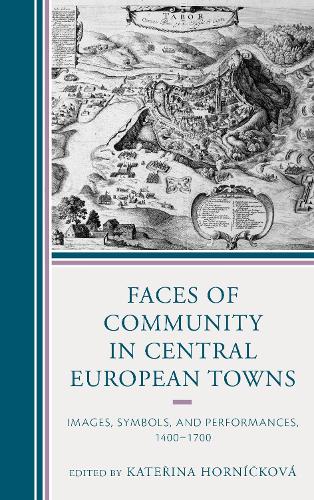
Faces of Community in Central European Towns: Images, Symbols, and Performances, 14001700
(Hardback)
Publishing Details
Faces of Community in Central European Towns: Images, Symbols, and Performances, 14001700
By (Author) Katerina Hornckov
Contributions by Tom Borovsk
Contributions by Jana Doktorov
Contributions by Elisabeth Gruber
Contributions by Katerina Hornckov
Contributions by Josef Hrdlicka
Contributions by Ondrej Jakubec
Contributions by Zdenka Mchalov
Contributions by Katerina Prakov
Contributions by Robert imunek
Bloomsbury Publishing PLC
Lexington Books
15th September 2018
United States
Classifications
Professional and Scholarly
Non Fiction
History of architecture
History of art
European history: medieval period, middle ages
307.760943
Physical Properties
Hardback
448
Width 159mm, Height 230mm, Spine 34mm
903g
Description
Concepts of visual communication form an explanatory framework for discussing the visual expressions of urban symbolic communication in urban life in towns in the center of Europe in the late medieval and early modern period, including the dramatic times of the Reformation and Counter-Reformation. This book examines the role of images and visual representation by concentrating on the varieties of symbolic communication in towns that made a range of relationships visual: the status and role of urban civic, professional, and religious communities and the relations between the town and its lord or powerful families and individuals. The geographical framework of this book is the region in the former Habsburg countries north of the Danube River embracing the region between western Bohemia and what is today eastern Slovakia, including the borderland towns of northern Austria. Two studies focus on specific local and occupational communities in the Prague towns, but most of the texts in this book focus on small towns by contemporary European standards in which many forms of urban topography, buildings, objects, and monuments survive, even though few written sources have been preserved. Accessing a wide range of literature in regional languages and German for English speakers, this collection describes typical urban landscapes in early modern Central Europe outside the well-known Central European urban centers and traditional areas of study. The book is a relevant new contribution to medieval and early modern studies, not only covering an underappreciated geographical area but also addressing general questions about the history of rituals and performance as well as visual culture, communication, and identity discourses in late medieval and early modern urban space.
Reviews
This is a work of real significance. By bringing together an international team of historians, this impressive study succeeds thanks to innovative and previously unapplied approaches. Using comparative methods, this volume challenges traditional views of medieval and early modern urban communities in the broader territory of Central Europe, and constitutes a great example of what scholars can achieve through international cooperation. This book will definitely serve not only as a benchmark for future research, but I also expect to find it on the reading lists for university courses on premodern urban life and culture in general. -- Jaroslav Miller, Palack University
This is a highly original approach to the rich history and culture of the towns of Central Europe and a welcome reminder that its urban landscape extended well beyond Prague, Vienna, and Buda. This collection by Kateina Hornkov and her colleagues is a marvelous example of how a close reading of material culture can deepen our understanding of this critical region. -- Howard Louthan, University of Minnesota
The volume, edited by Kateina Hornkov, represents a new and innovative approach to the visual aspects of Central European towns in a transitory period of the later Middle Ages and the early modern area. The contributors are representatives of a new generation of Central European historians who take a fresh look on the role of images, symbolic communication, and visual representations on the urban centers of the region. This innovative collection of essays, based on strong theoretical background, will have a secure place on university reading lists and on the bookshelves of many interested students and professors. -- Balzs Nagy, Central European University
This fascinating collection of essays provides a rich account of the changing character of Central European towns during the late medieval and early modern periods. Detailed exploration in each chapter of the visual culture of different towns across Bohemia and Moravia illuminates broader themes about the history of religious, social, and cultural life. The essays analyze how the identities of urban communities adapted in the face of turbulent political and religious changes. Peeling back the layers of Baroque embellishment, the contributors reveal evidence about the vibrant influence in Bohemian and Moravian towns of the Hussite, Lutheran, and Catholic churches, each leaving its own distinctive mark on the changing face of the region. -- Graeme Murdock, Trinity College Dublin
Author Bio
Kateina Hornkov is researcher at the University of Vienna.
